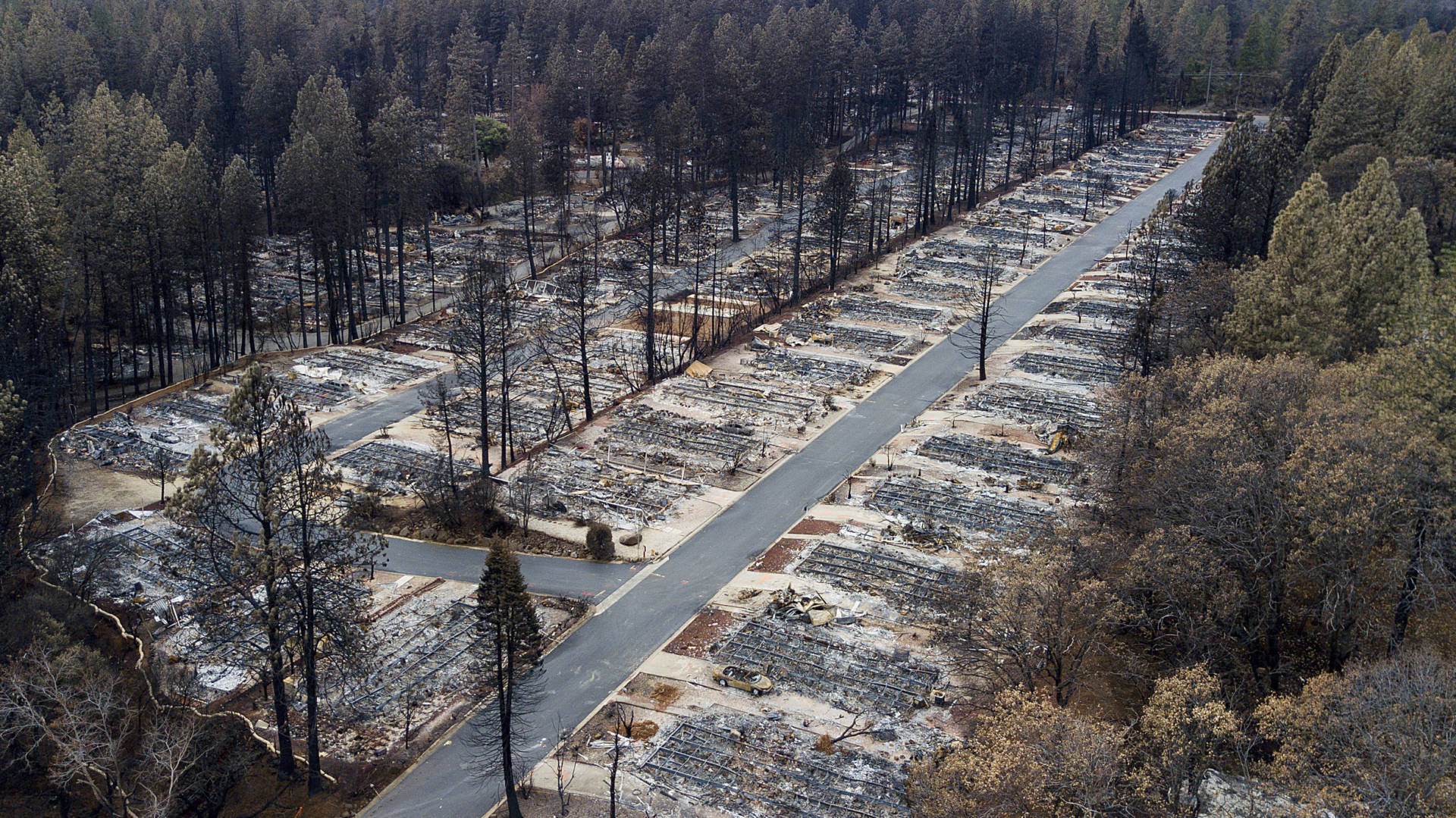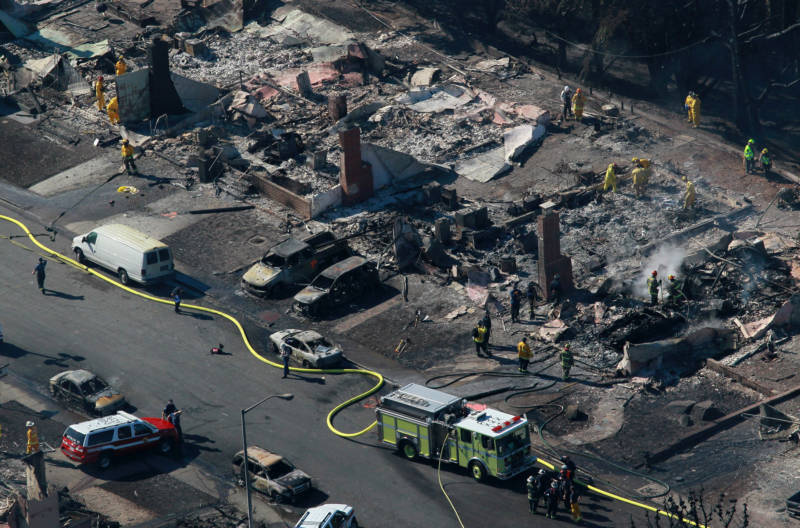F
acing staggering liability costs for its potential culpability in a series of deadly wildfires, the parent company of California’s largest utility is exploring whether to sell off a major part of the company, NPR has learned.
Internally, Pacific Gas & Electric has dubbed this strategy “Project Falcon.” Under the plan, the company would sell its natural gas division this spring. After years of deadly errors and safety violations, the utility giant is looking for ways to cover liability costs and avoid bankruptcy, a senior company official and a former employee with knowledge of the plan tell NPR.
All net proceeds from the sale of PG&E’s gas division would be used to set up a fund to pay billions of dollars in potential claims from wildfires, the sources said. They requested anonymity because they were not authorized to speak publicly.
The company also is exploring selling key real estate assets, including its San Francisco headquarters, and moving its operations elsewhere in the Bay Area, the sources say.
On Friday the company announced it would be”reviewing structural options” to best position the company to meet customer and operational needs. In addition, PG&E said it is searching for new directors for its board to “augment its existing expertise in safety.”
PG&E declined to make any senior leaders available to comment on Project Falcon. A written statement from spokesman Andy Castagnola said, “PG&E does not comment on market rumors or speculation. As a company, our priority continues to be the safety of our customers and the communities we serve.”
Wildfire Damages
In June, the state’s fire agency, Cal Fire, determined that PG&E power equipment was responsible for sparking at least a dozen major fires across Northern California in 2017. And now, regulators are investigating whether PG&E equipment sparked November’s Camp Fire, the deadliest and most destructive in state history.
The company could end up having to pay billions from legal action stemming from the 2017 and 2018 wildfires.
Equity analysts project PG&E’s damages from the wildfires could exceed PG&E’s market value and its insurance coverage. One Citigroup analyst estimates the company could be on the hook for up to $15 billion in damages.
Insurance companies Allstate, State Farm and USAA have filed lawsuits against PG&E, blaming the utility for the Camp Fire.
The gas sale strategy would have to be approved by the state regulatory agency, the California Public Utilities Commission, which has already expressed deep concerns about PG&E’s shoddy safety record, lack of transparency and past efforts to pass liability costs on to the state’s ratepayers.
So far, state regulators and lawmakers have been kept out of PG&E’s planning loop for Project Falcon, named for a group of peregrine falcons nesting on the roof of the company’s headquarters.
The current and former PG&E officials say they’re speaking with NPR out of concern senior management is not acting in the best interests of ratepayers, safety and the state. “There’s a public trust element in being a utility monopoly,” said the senior company official.
Bailout?
PG&E is under no legal obligation to disclose its internal discussions about ways to stave off bankruptcy. But given the potential impact on ratepayers and taxpayers if the utility eventually needs a bailout, Michael Wara, a lawyer and research scholar at Stanford University, calls the lack of transparency “extremely disappointing.”
“They need to be thinking very hard about how to create safety for Californians rather than how to make money for shareholders when they’re not being totally transparent, especially in the current context where there’s a lack of trust and so many people that have been harmed by PG&E’s infrastructure,” Wara said.
Wara added, “What California urgently needs and wants from its utilities right now is hard thinking about how to better protect communities from fire. And it’s hard to see that going on.”
Wall Street wants to see hard thinking, too.
Steve Fleishman, senior utilities analyst and a managing director at Wolfe Research, said PG&E’s plan for dealing with fires in the future is unclear. “They clearly seem to be more at risk for that,” Fleishman said. “This kind of risk profile is not sustainable.”
PG&E’s stock is down about 50 percent since the Camp Fire broke out on Nov. 8.
Consumer watchdog groups want any big move done with transparency.
“Anything PG&E wants to propose should be done in an open, public manner and include a comprehensive, coherent wildfire mitigation strategy,” says Mark Toney, executive director of The Utility Reform Network (TURN).
There is widespread anger in the state over PG&E’s shoddy safety record. Protests broke out at recent public oversight meetings and at the company’s San Francisco headquarters, where environmentalists and activists read the names of the more than 100 people who died in the combined Camp Fire and last year’s wildfires in Napa and Sonoma counties. At one customer service center the company has installed new bulletproof glass.


9(MDAxOTAwOTE4MDEyMTkxMDAzNjczZDljZA004))